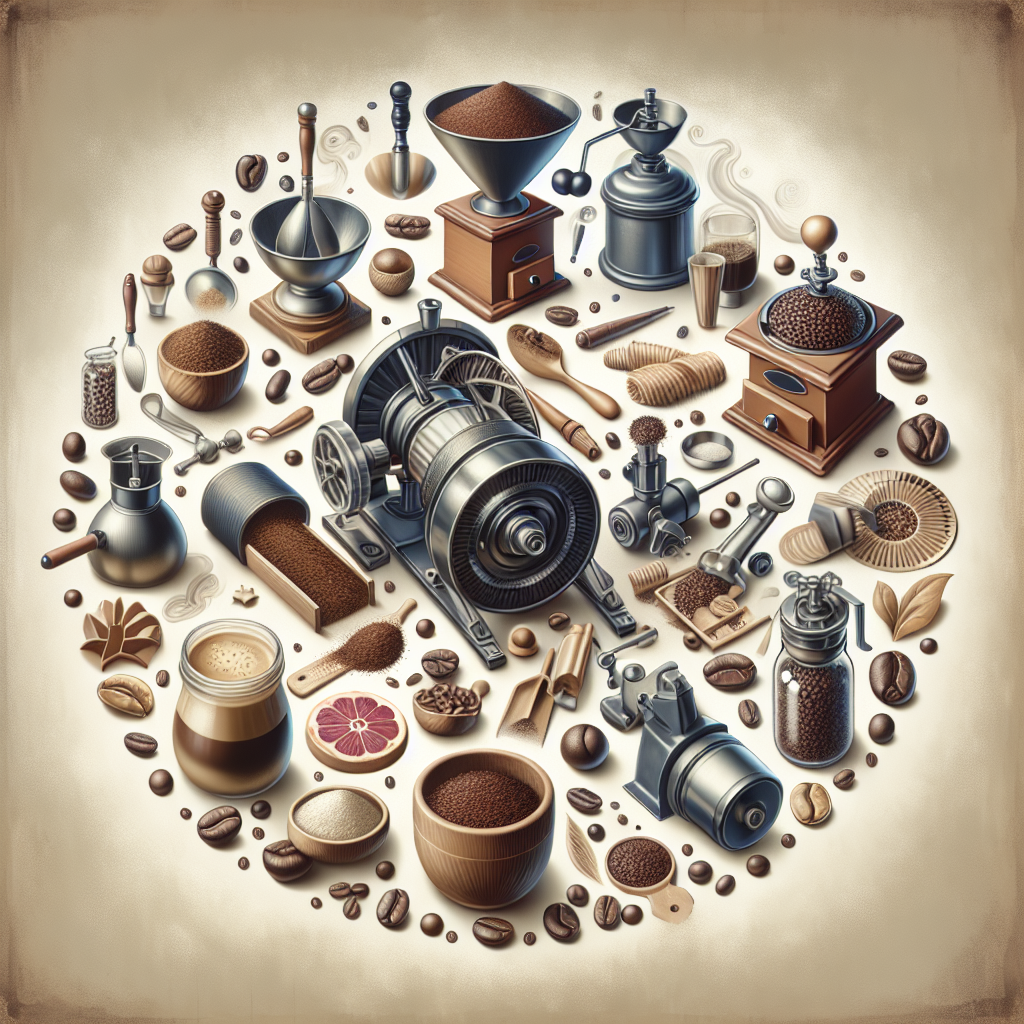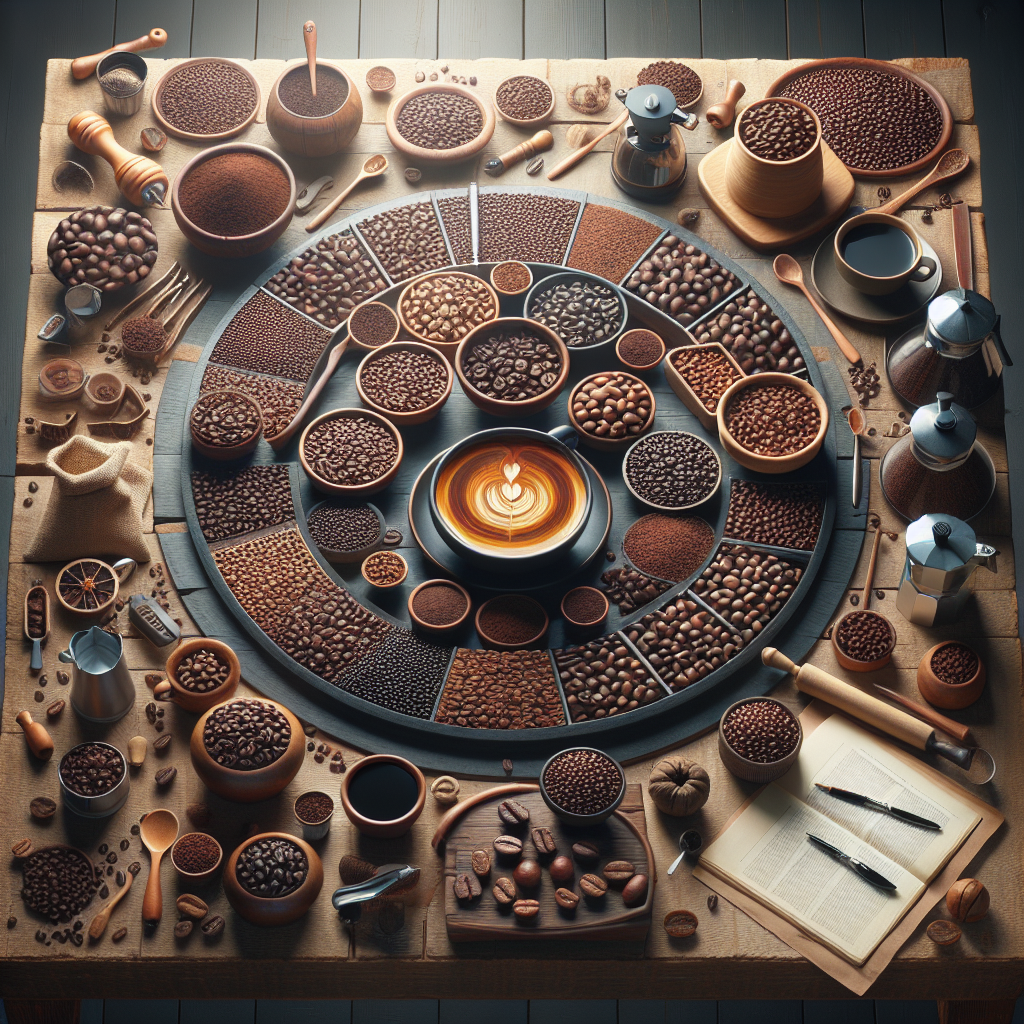Introduction
Imagine waking up to the aroma of freshly brewed coffee wafting through your home. The secret to that perfect cup lies not just in the beans you choose but also in the grind size. Selecting the right coffee grind can transform your morning ritual into an extraordinary experience. This guide will walk you through the different grind sizes, their uses, and tips on choosing the ideal grind for your brewing method.
- The Importance of Coffee Grind Size
- Different Types of Coffee Grinds
- Selecting the Right Grind for Your Brewing Method
- Using Manual Coffee Grinders
- Key Takeaways
- FAQs
- Conclusion
The Importance of Coffee Grind Size
Why does the grind size matter? Think of it as the key that unlocks the flavors within your coffee beans. The size of the grind affects the extraction process, influencing the taste, aroma, and overall quality of your brew. A mismatched grind can lead to over-extraction or under-extraction, resulting in a bitter or weak cup.
Different Types of Coffee Grinds
Extra Coarse Grind
This grind resembles coarse sea salt and is usually used for cold brews. Its large particles allow for a slow extraction process, creating a smooth and mellow flavor profile.
Coarse Grind
Coarse grind has a texture similar to rock salt and is ideal for French Press brewing. The larger surface area allows for a longer steeping time without over-extracting the coffee.
Medium-Coarse Grind
Best suited for Chemex and Clever Dripper methods, this grind size looks like rough sand. It balances extraction time and flavor development.
Medium Grind
A versatile grind that works well with drip coffee makers and siphon brewers. Its texture is akin to regular sand, providing a balanced extraction.
Fine Grind
This grind is similar to table salt and is commonly used for espresso machines. The fine particles allow for quick extraction, delivering a rich and intense flavor.
Extra Fine Grind
Almost powdery, this grind is used for Turkish coffee. It requires a special grinder capable of achieving such a fine consistency.
Selecting the Right Grind for Your Brewing Method
Your brewing method dictates the grind size you should use. For instance, if you’re using a Keurig machine, you’ll need a medium grind. Learn more about the optimal grind size for Keurig here. Each method, from French Press to Espresso, has its unique requirements.
Using Manual Coffee Grinders
Manual coffee grinders offer control over your grind size and are often portable, making them a favorite among coffee enthusiasts. Models like the KONA Manual Coffee Grinder or the Brushed Stainless Steel Manual Coffee Grinder by Integrity Chef provide excellent options for consistent grinds.
Key Takeaways
- The grind size significantly impacts the flavor and quality of your coffee.
- Choose a grind size that matches your brewing method.
- Manual grinders offer precision and control over your grind.
- Avoid over-extraction or under-extraction by selecting the appropriate grind size.
FAQs
Is it cheaper to grind your own coffee?
Yes, grinding your own coffee can be more cost-effective and offers fresher flavors. Learn more about the cost benefits here.
Which coffee bean is best?
The best coffee bean depends on personal preference and desired flavor profiles. For a detailed guide on selecting the best beans, check out our article here.
What is the best way to grind coffee?
The best way to grind coffee varies based on your brewing method and personal taste. Discover more about grinding techniques here.
Conclusion
Selecting the right coffee grind is an art that can elevate your daily coffee experience from mundane to extraordinary. Whether you’re using a manual grinder or an electric one like the Breville Smart Grinder Pro, the key lies in matching your grind size to your brewing method. Embark on this flavorful journey and discover the perfect grind that resonates with your palate.
The world of coffee is rich and varied, much like a well-composed symphony waiting to be explored. So, why settle for anything less than perfection in every cup?








